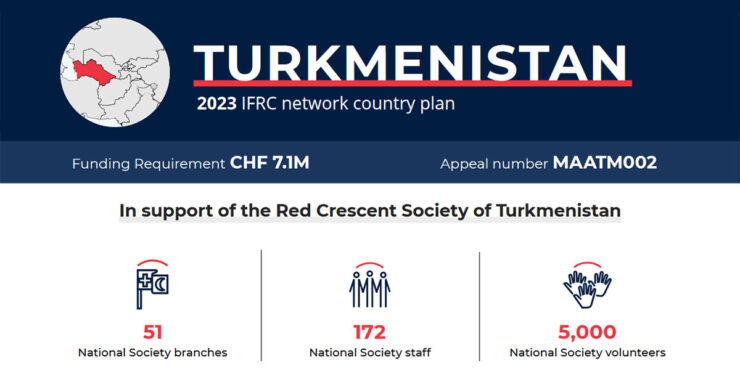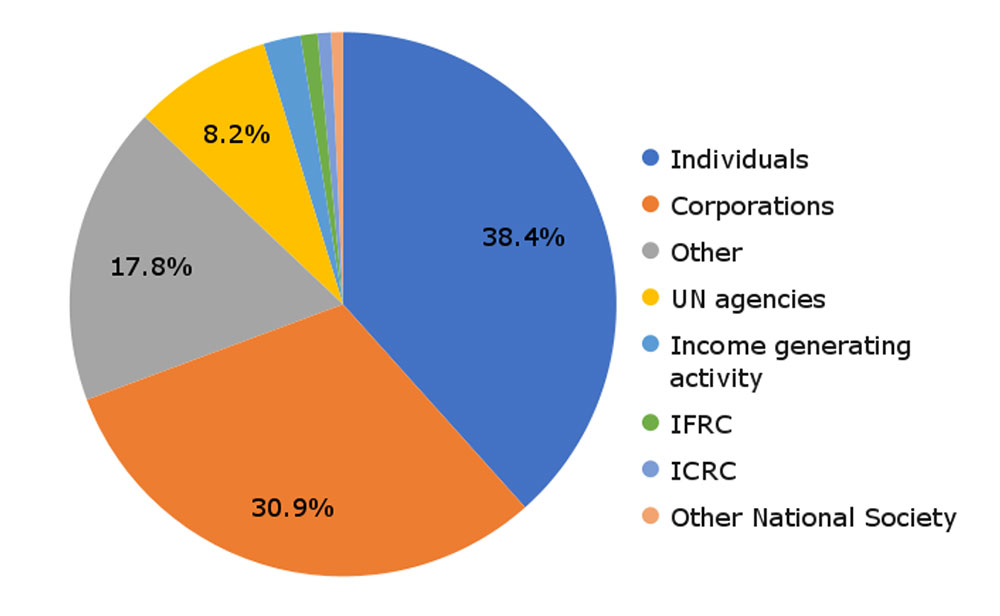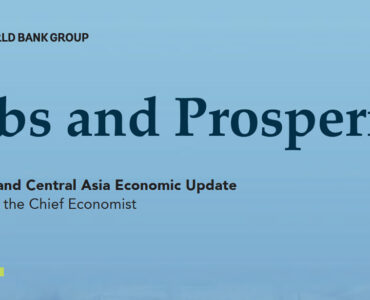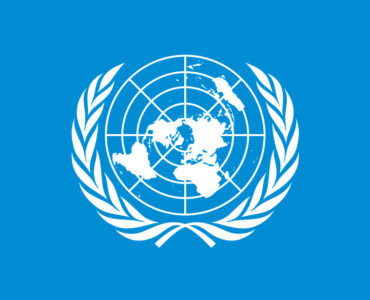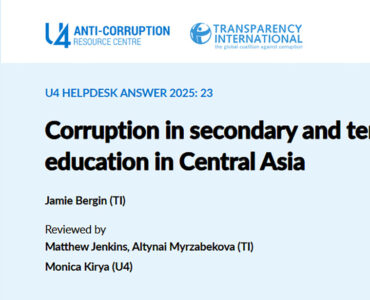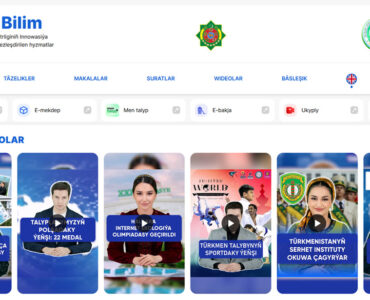The International Federation of Red Cross and Red Crescent Societies (IFRC) published a “Turkmenistan 2023 IFRC network country plan” on 12 July 2023. The plan aims to reach up to 450,000 people in Turkmenistan in areas of climate and environment, disasters and crises, health and wellbeing, and values, power, and inclusion. Turkmenistan’s funding requirement is CHF 7.1 million, which accounts to 32.42% of Central Asia’s funding. Of this amount, CHF 3.2 million to be directed to the Host National Society for its longer-term needs.
The funding will be used to:
- Address recurrent disasters – e.g. floods, earthquakes, heat waves or drought.
- Implement measures for climate change adaptation.
- Mitigate social vulnerabilities – in Turkmenistan vulnerable groups include people with disabilities, orphans, elderly, and women.
- Enhance disaster preparedness and readiness.
- Mobilize volunteers.
- Support digital transformation – via equipping the National Society with a set of video conferencing hardware and digitizing its database of beneficiaries. The report mentions that only 21% of Turkmenistan’s population uses the Internet.
What does the National Red Crescent Society do in Turkmenistan?
The IFRC is the world’s largest humanitarian network, comprising 191 National Red Cross and Red Crescent Societies. In Turkmenistan the National Society was established as an independent public organization in 1992. As defined by 2012 legislation “On the National Red Crescent Society of Turkmenistan” it is an auxiliary entity in the humanitarian sector. It coordinates with Turkmen authorities to define its areas of work. According to the country plan, the National Society employs 172 people and engages 5,000 volunteers across 51 branches in five provinces, six cities, and 40 districts. The organization focuses on enhancing public awareness on preventing drug addiction and infectious diseases, such as tuberculosis and HIV/AIDS.
The Red Crescent Society of Turkmenistan derives income from three distinct sources:
- Earnings from three affiliated trading and construction companies which are tax-exempt by law. They contribute 30% of their earnings to the National Society.
- Revenue from fee based first aid courses.
- Annual membership fees of 15 Turkmen manats (USD 9) per member.
According to the recent data from 2021, contributions from individuals and corporations account for the largest source of its income (see Figure 1).
Figure 1. The Red Crescent Society of Turkmenistan’s sources of income in 2021
Source: IFRC Federation – Wide Databank and Reporting System.
Donate to support Turkmen analysts, researchers and writers to produce factual, constructive and progressive content in their efforts to educate the public of Turkmenistan.
SUPPORT OUR WORKBased on the data from IFRC, the National Society generated more income compared to its expenditure during 2018-2021.
Figure 2. The Red Crescent Society of Turkmenistan’s income and expenditure over time
Source: IFRC Federation – Wide Databank and Reporting System.
The National Society uses its revenue to:
- Distribute items to meet basic needs – e.g. food, hygiene kits, clothing, wheelchairs, and household items.
- Provide community infrastructure and education – e.g. constructing playgrounds for orphans and children with disabilities, supplying stationery items and school uniforms for school children.
- Provide support services – e.g. offering psychosocial support for elderly individuals and funding treatment for cancer patients in low-income families.
The National Society provides the following types of support:
- Climate Resilience Efforts – in 2022 the National Society planted 30 million climate resistant trees together with the Ministry of Water Management, Ministry of Education, and Ministry of Ecology.
- Humanitarian Assistance and Emergency Preparedness – to assist disaster-affected individuals the National Society stocks essential household items and tents for nearly 1,000 people in the capital city and districts, clothing for 5,000 children and over six metric tons of food reserves for potential Afghan refugees.
- COVID-19 Vaccine Outreach – the National Society, in collaboration with public authorities, conducted comprehensive vaccine promotion, addressing vaccine concerns through door-to-door visits and vaccination clinics, ultimately reaching over one million individuals.
- Reintegration of migrant workers – every year around 20,000 to 25,000 people from Turkmenistan migrate to Turkey for work. From 2008 to 2018, nearly 2 million people left the country for foreign residence or work, according to Turkmenistan’s Statistical Committee.
Known unknowns about the Red Crescent Society of Turkmenistan
While on paper the Red Crescent Society of Turkmenistan is implementing crucial humanitarian work and serving the vulnerable groups, in reality there are major concerns from the public that need immediate attention. These concerns underscore challenges in the National Society’s transparency, accountability, and effectiveness in addressing humanitarian needs in Turkmenistan.
- Lack of transparency and accountability: There is no publicly accessible information about the National Society in Turkmen or Russian languages while the organization’s website ‘https://www.tgymj.gov’ does not work. The annual reports for 2013-2021 are available on the IFRC website. However, they are incomplete, lacking quality data on the National Society’s annual income, expenses, its progress or shortcomings.
- Results of the External Audit are not widely known. Although the National Society claims to have undergone an external audit in 2022 to enhance its financial transparency, the results have not been publicly shared.
- Lack of relevant studies and data on focus areas and target groups: the National Society does not conduct a proper needs assessment to determine the most vulnerable and at risk people. As the Turkmen government does not recognize the spread of HIV/AIDS in the country, it is unclear how the National Society conducts its work in this area.
- Absence of regular public communication and education. The National Society does not have a public communication channel or awareness raising programs. There should be greater publicity about their services, particularly of regional and local branches.
- Forced public contributions: Reports from alternative sources suggest that public sector employees, students, farmers and private businesses were compelled to make contributions to the National Society in 2017 and 2019.
- Leadership issues: Gulnabat Dowletova, former President Gurbanguly Berdimuhamedov’s sister, served as the Executive Director of the National Red Crescent Society from 2014 to 2022 until her dismissal in April 2022 by the new president, Serdar Berdimuhamedov. Allegations suggest that she took advantage of the right of duty-free imports, which were designated by law for the needs of the National Society. There is a claim that Gulnabat Dowletova imported goods for sale and opened self-supporting enterprises to advance her own earnings. Neither the government nor the Red Crescent Society of Turkmenistan have publicly addressed these allegations.
- Suppression of information: The government suppresses news concerning natural disasters and epidemiological cases like COVID-19. The National Society’s 2020 annual report had two sentences describing their efforts to curb the pandemic. This secrecy makes it difficult to assess the Society’s capacity and effectiveness to provide necessary assistance.
- Disregarding the needs of its beneficiaries: Every year in Turkmenistan around 70,000 people are affected by flooding and 100,000 are impacted by earthquakes, with nearly 300 resulting fatalities. In 2020, severe storms in Lebap and Mary regions led to serious casualties. The government and national media did not acknowledge and report the situation. Neither the authorities nor the National Society provided assistance to the affected people. The organization’s 2020 annual report completely ignored the incident. Silence about the disaster and disregard to the needs of the impacted people makes one question the role of the National Society and its ability to address such crises.

